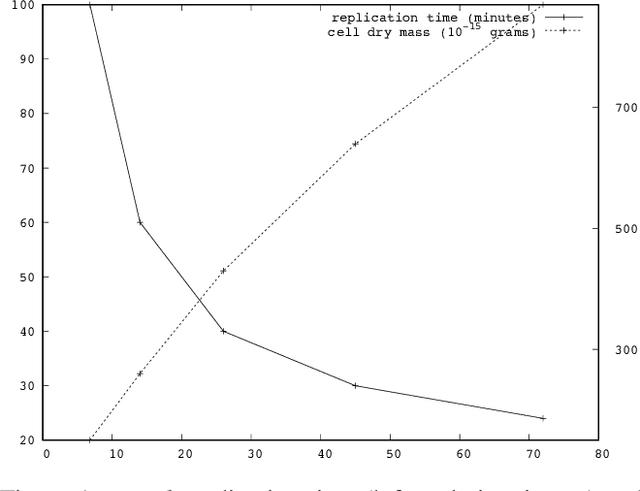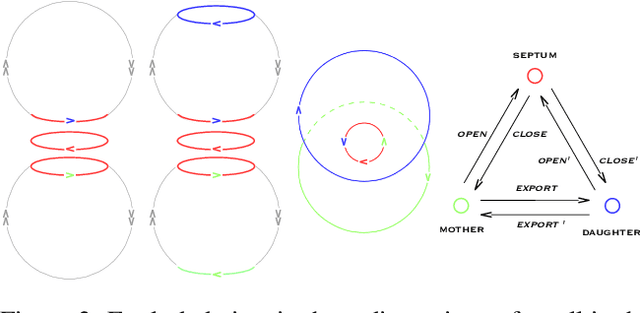Increased Complexity and Fitness of Artificial Cells that Reproduce Using Spatially Distributed Asynchronous Parallel Processes
Paper and Code
Mar 15, 2021



Replication time is among the most important components of a bacterial cell's reproductive fitness. Paradoxically, larger cells replicate in less time than smaller cells despite the fact that building a larger cell requires increased quantities of raw materials and energy. This feat is primarily accomplished by the massive over expression of ribosomes, which permits translation of mRNA into protein, the limiting step in reproduction, to occur at a scale that would be impossible were it not for the use of parallel processing. In computer science, spatial parallelism is the distribution of work across the nodes of a distributed-memory multicomputer system. Despite the fact that a non-negligible fraction of artificial life research is grounded in formulations based on spatially parallel substrates, there have been no examples of artificial organisms that use spatial parallelism to replicate in less time than smaller organisms. This paper describes artificial cells defined using a combinator-based artificial chemistry that replicate in less time than smaller cells. This is achieved by employing extra copies of programs implementing the limiting steps in the process used by the cells to synthesize their component parts. Significant speedup is demonstrated, despite the increased complexity of control and export processes necessitated by the use of a parallel replication strategy.
 Add to Chrome
Add to Chrome Add to Firefox
Add to Firefox Add to Edge
Add to Edge